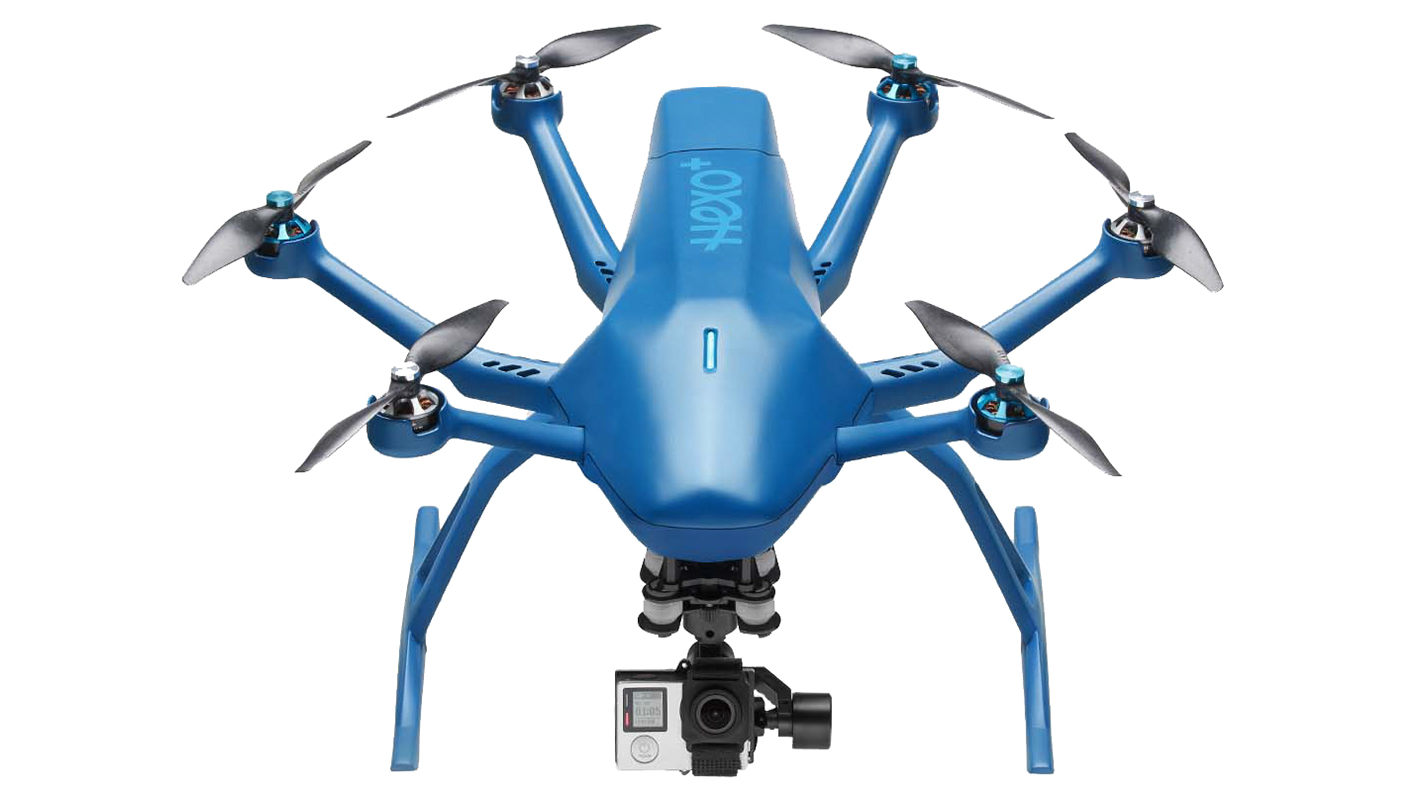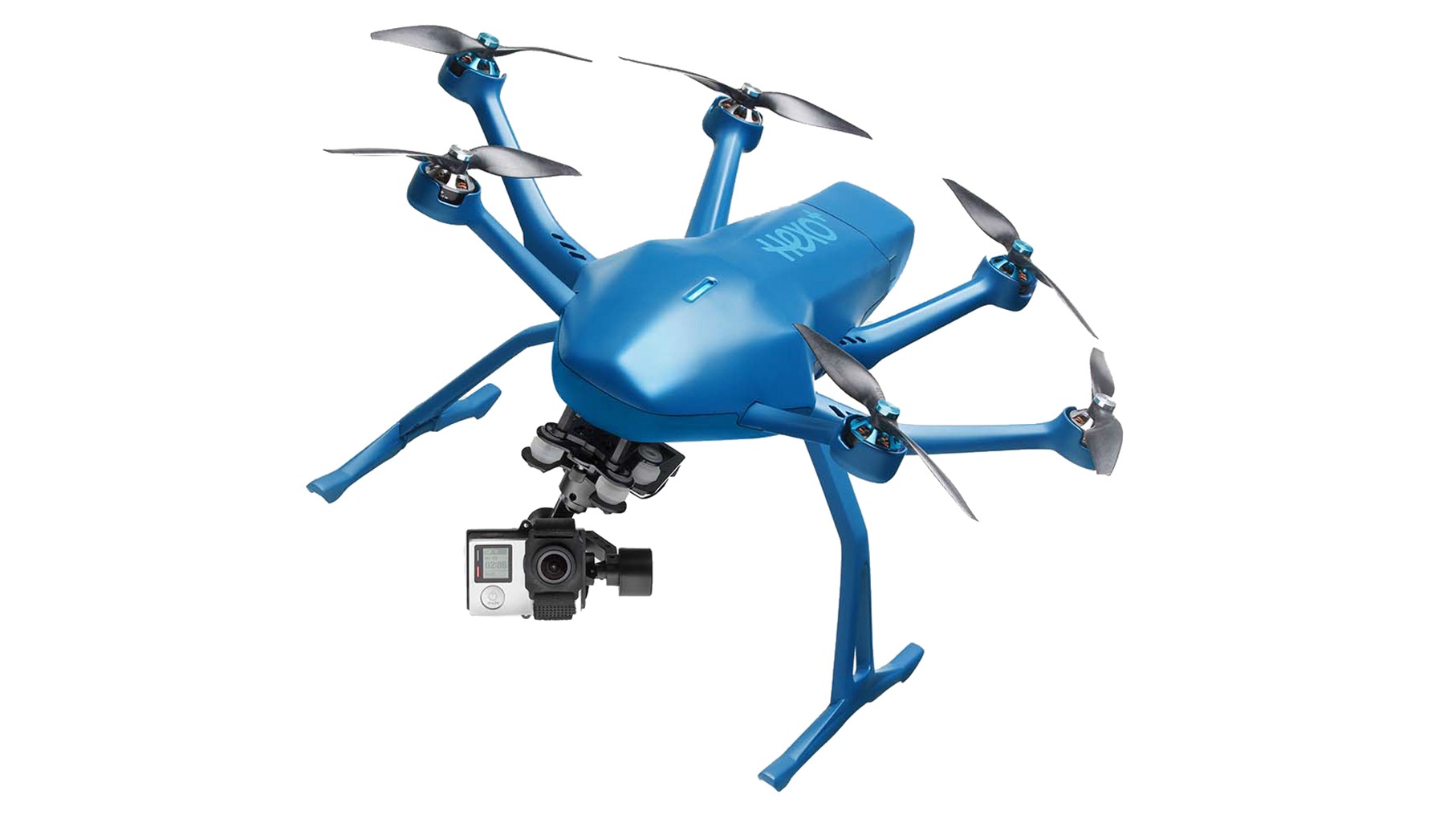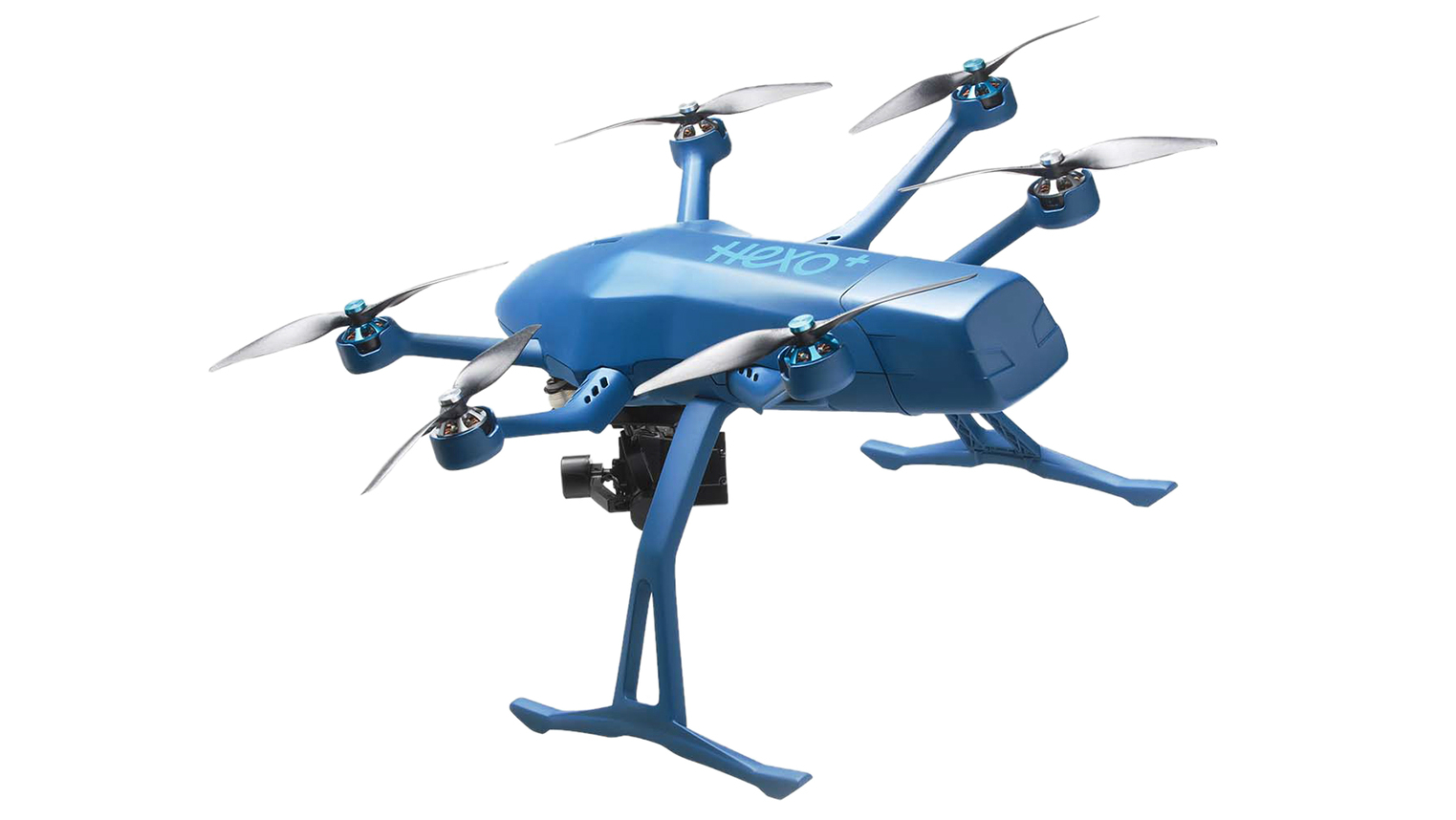HEXO+ review: does this crowd-funded drone fly without wings, or plummet to Earth?
And can the HEXO+ compete with drones from Parrot, DJI and 3D Robotics?


-
+
Accurate tracking
-
+
Great stability
-
+
App is glitch free
-
-
Expensive
-
-
Lengthy charging time
-
-
No obstacle-avoidance tech
Why you can trust T3
Domestic drones have become huge business for brands like DJI, Parrot and 3D Robotics, these stylish, app-connected aerialphotography quadcopters giving thrill-seekers an alternative to strapping on a GoPro, and opening up new doors for extreme selfies.
But now, a new kind of drone is taking to the skies. Over the past 18 months or so, we've seen a number of 'autonomous' drones being launched via Kickstarter. That means no complex controls to learn – these drones will follow your every move, hands-free, whether you're thrashing down a mountain on a bike or shredding deep powder on an Alpine black run.
On paper, the most powerful of these drones is the Hexo+. So how does it measure up in terms of build quality, performance and price? A key difference with the Hexo+ is its six arm-mounted propellers, which make it a hexacopter rather than the more common quadcopter design. The long plastic body is reminiscent of the baddie-blasting Air Force drones you see on the news. Despite its ample size, the Hexo+ is light enough to be transported to filming locations off the beaten track – even with the GoPro-compatible gimbal attached and a li-po battery installed.
Easy set-up

Assembly is a cinch. Slide the two plastic landing gears into place, screw the colour-coded propellers onto the motors, attach the gimbal to the rails on the drone's belly and plug in the gimbal's power cable. This exposed cable might not survive a bumpy landing, but built-in safety features should ensure that every landing is soft. Still, we'd expect a slicker, more integrated design seeing as we're getting little change from £700.
The battery slots neatly inside the rear of the drone, and charging takes just over an hour via an aftermarket eCube charger. The charger connects to the mains via (in our case) a US plug converted with an AC adaptor, and the battery is connected to the charger via a balance cable. These cables are standard fare in the RC world but, as we all strive to go cable- and clutterfree, two separate cables and an adaptor for charging seems excessive. Hopefully, there will be a simplified, Hexo-specific solution in the future.
Additional batteries cost £90 each. That's cheaper than other brands, but still steep considering the average 15 minutes of fl ight time per battery (dependent on conditions and which camera movements are selected).
The Hexo+ uses a phone's GPS position via the free Hexo+ app, along with four other sensors (accelerometer, gyroscope, barometer, magnetometer) to pinpoint where the subject is and how it's moving to ensure optimum tracking and framing. It takes just 21 seconds from switching the drone on to it syncing with GPS, and connecting your phone to the drone via Bluetooth is a doddle. When you fi rst open the app, there are some simple pre-flight checks – and, of course, you'll need to agree to the conditions of use.
Get all the latest news, reviews, deals and buying guides on gorgeous tech, home and active products from the T3 experts
Before shooting your first frames, conduct a few test runs to learn how the Hexo+ goes about its business. When you select one of the 12 available camera movements – we started with a predictable Hover Close – the drone takes off and makes four 90-degree turns to calibrate before flying into position, where it hovers, ready to execute the camera movement. We can't emphasise enough how quickly this process happens, and if space is limited, the drone will crash.
Once you get a feel for how the Hexo+ reacts, you can choose the best spots to film, but it's safe to say that trees and power lines are a no-no for this device. Hexo says that “obstacle avoidance tech available today isn't quite cutting it in our eyes”, but DJI's new Phantom 4 has surely moved this to the top of the company's to-do list.
Quirky angles

That aside, the fun really begins when you're comfortable with the drone and ready to shoot. Camera movements are selected by a single tap within the app menu; the drone fl ies into position and awaits your command to Start Shooting. Highlights include Hover High, where the drone sits directly above you, taking in a huge amount of the landscape and moving with the smartphone-wielding subject on the ground. Shooting with this setting on a snow-capped mountain or golden beach would look incredible.
The panoramic 360, Fly In/Out and Slide Sideways modes will all perfectly capture the moment when you conquer your next mountain peak. They could also add quirky angles to an outdoor wedding video.
Follow Me is the most spectacular mode and the main reason to buy this drone. We tested it by hurtling down a sloping field on a mountain bike. High winds added even more for the Hexo+ to tackle, but it kept pace, those six propellers working hard to maintain stability. Reaction to sudden bursts of speed or movement is instant, and the gimbal's 3-axis stabilisation keeps the camera fixed firmly on the subject.
Connection between drone and smartphone is consistently strong, and there's no noticeable difference in drone reflex whether the phone is in your hand, or stowed in your pocket or backpack. Initially, it's disconcerting being followed by an autonomous drone, and the instinct is to keep looking up for reassurance that it's there, but the drone's movements are precise and eventually trust takes over.
GoPros are still the leading action cameras, and the latest Hero 4 Black delivers optimum resolution and frame rate, so you know your footage will be great. Plus, you can upgrade in the future – something that can't be said for fixed-camera drones. This does, however, mean that after paying £700 for the drone, you can't fi lm anything until you shell out for a GoPro.
With the drone airborne, camera movements can be easily changed via the app, and an impending software update will enable users to customise and combine movements for unique shots. This means there's no real need to land the drone for the entirety of a battery's life, unless you decide to change location. Also, there's no facility to control the GoPro from your smartphone after take-off (the camera is strapped to the gimbal, as opposed to any wired connection), so you must switch the camera on and set it to record before the Hexo+ is in the air. This also means you'll need to be happy sifting through footage, and cutting take-off, landing and repositioning sequences from edits.
Superb results

One of the biggest problems we've experienced with other drones is that with forward motion the drone tilts, the gimbal angles to accommodate this shift and the propellers encroach on camera footage. Thankfully, the Hexo+'s props are smaller and positioned deliberately higher than the camera, eradicating this problem.
The main focus for the drone is to capture great footage, and, combined with the stability of the body, the accurate movement of the gimbal and the ability of the GoPro Hero 4, our footage kept up with the subject at all times, producing superb results. We tested in a field on a grey UK day, but the possibilities are limited only by your access to photogenic locations, the weather and your imagination.
Autonomy has its place, then, but what about those who want to feel a controller in their hands? Well, while autonomous flight is this drone's modus operandi, it's also compatible with an RC controller, should you wish to fly manually.
Hexo promises quarterly firmware and app updates, and we've already caught wind of a forthcoming function called Magic Wand, which will open the drone up to Minority Report-style gesture control from your smartphone. We'd also love the option to map GPS points within the app (as offered by DJI's Waypoints fl ight mode). Time will tell how much scope there is for these types of upgrade.
Kickstarter products are rarely perfect from version 1.0, and it's still early days for the Hexo+, but this is an impressive foundation for the fledgling brand to build upon. The price may prove too high for some people, but the Hexo+ is an exciting product with bags of potential.
Specifications
Price: £699 | Buy Hexo+
Weight: 1.7kg (with gimbal and battery installed)
Camera: Compatible with GoPro
Max flight time: 15 mins
Charge time: Approx one hour
Battery: 5,000mAh 3S li-po
App requirements: Android 4.4 (Kitkat) and above; iOS 8 and above
Range: 100m (in Follow mode)
Max speed: 70kph
Navigation GPS: Antenna

For 25 years T3 has been the place to go when you need a gadget. From the incredibly useful, to the flat out beautiful T3 has covered it all. We're here to make your life better by bringing you the latest news, reviewing the products you want to buy and hunting for the best deals. You can follow us on Twitter, Facebook and Instagram. We also have a monthly magazine which you can buy in newsagents or subscribe to online – print and digital versions available.
